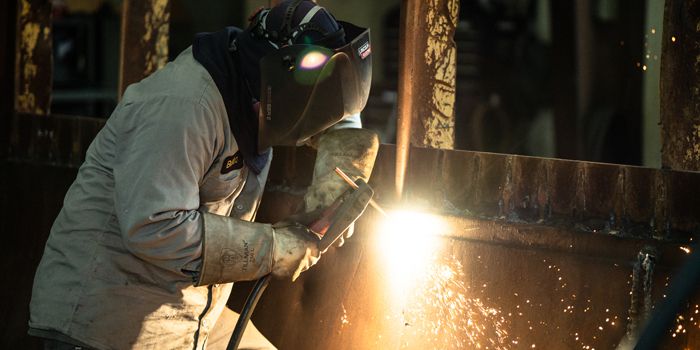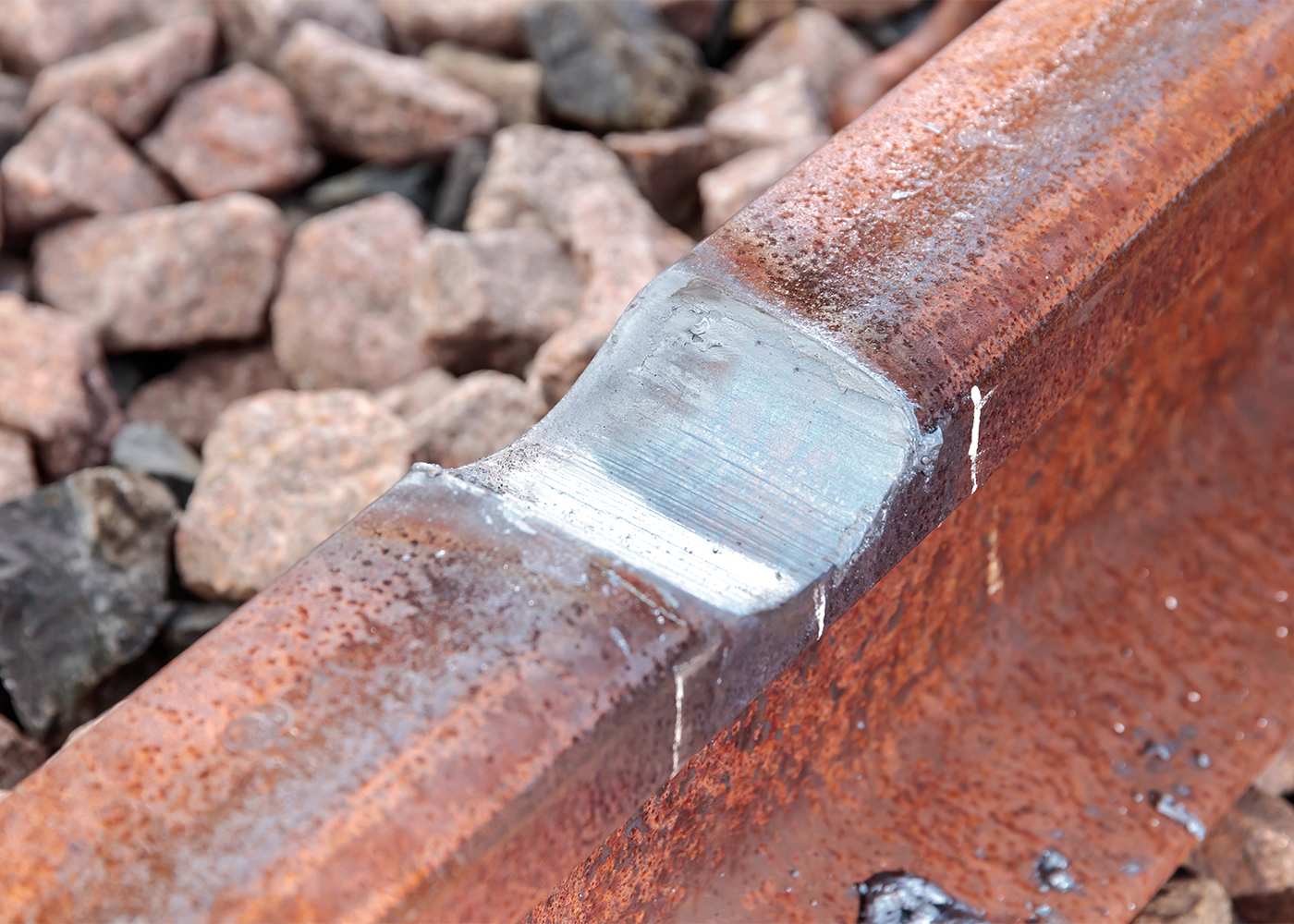Usual Welding Repair Service Issues and Just How to Address Them Properly
Welding repair work often run into a range of problems that can endanger the honesty of the end product. Typical issues consist of poor penetration, porosity, and misalignment, to name a few. Each problem provides one-of-a-kind difficulties that need details approaches for resolution. Understanding these concerns is necessary for welders intending to boost their abilities and results. This discussion will certainly check out these usual welding fixing problems and reliable methods to resolve them.
Poor Infiltration
Poor infiltration occurs when the weld metal fails to completely fuse with the base product, resulting in weak joints and potential architectural failures. This concern frequently comes from insufficient heat input, inaccurate electrode angle, or improper welding rate. Welders may run into poor penetration because of a miscalculation of the needed parameters for a particular material thickness or kind. Additionally, contamination on the base material's surface area can hinder reliable bonding, aggravating the trouble. To deal with poor infiltration, welders need to assure proper setups on their tools and preserve a clean job surface area. Regular assessment of welds is advised to determine any type of deficiencies early, enabling for prompt modifications and the prevention of jeopardized structural stability in bonded settings up.
Porosity
Porosity is a common problem in bonded joints that shows up as little gas bubbles caught within the weld steel. This flaw can endanger the integrity of the weld, causing decreased stamina and possible failing under stress and anxiety. Montana Mobile Welding and Repair Belgrade. Porosity generally occurs from contamination, dampness, or inappropriate welding strategies, which allow gases to leave into the liquified weld swimming pool. To attend to porosity, welders should ensure proper surface area preparation, keep a tidy workplace, and utilize appropriate welding specifications. In addition, picking the ideal filler product and protecting gas can minimize gas entrapment. Regular assessment and testing of welds can assist identify porosity early, guaranteeing timely rehabilitative activities are taken, consequently protecting the top quality and integrity of the bonded structure
Imbalance
Imbalance in welding can occur from different aspects, including improper setup and thermal expansion. Recognizing the origin is essential for reliable resolution. A number of improvement strategies are offered to straighten parts and ensure architectural honesty.
Root causes of Imbalance
Welding misalignment commonly originates from a range of underlying problems that can jeopardize architectural stability. One key cause is improper fit-up of elements prior to welding, which can bring about gaps and unequal surfaces. Variations in thermal development during the welding procedure can likewise cause distortion, specifically if the materials being signed up with have various coefficients of development. Additionally, poor clamping and fixturing may fall short to hold parts securely in position, bring about activity during welding. Inadequately maintained tools, including welding devices and devices, might introduce inconsistencies in the weld grain, additional contributing to imbalance. Operator mistake, stemming from insufficient training or experience, can also play a considerable duty in developing misaligned welds.

Modification Strategies Offered
Addressing imbalance efficiently calls for a combination of corrective techniques customized to the details issues handy. One common method is making use of fixtures or jigs to hold parts in the correct placement throughout welding, making sure consistent positioning. Furthermore, pre-heating the products can help in reducing distortion and enhance fit-up. For significant misalignment, mechanical adjustment methods, such as using hydraulic jacks or clamps, can be utilized to fix the position prior to welding. Post-weld warm treatment may also be required to ease stress and anxieties brought on by imbalance. Careful examination and adjustment throughout the setup stage can avoid imbalance problems from becoming significant problems, promoting a smoother welding procedure and improving overall architectural stability.
Distortion
Distortion is a typical difficulty in welding that can arise from various variables, including irregular heating & cooling. Understanding the sources of distortion is essential for executing efficient prevention techniques. Addressing this concern not only improves structural stability but also boosts the overall high quality of the weld.
Sources of Distortion
When subjected to the intense warmth of welding, materials usually undergo changes that can result in distortion. This sensation largely develops from thermal growth and tightening throughout the welding procedure. As the weld area warms up, the material increases; upon air conditioning, it contracts, which can produce interior tensions. Furthermore, irregular heating across a workpiece can intensify these stresses, leading to bending or flexing. The kind of product likewise plays a considerable function; metals with differing thermal conductivity and coefficients of growth may respond in a different way, bring about uncertain distortions. In addition, poor joint design and poor fixturing can add to misalignment throughout welding, enhancing the probability of distortion. Understanding these reasons is crucial for reliable welding repair and avoidance techniques.
Prevention Techniques
Reliable prevention strategies for distortion during welding focus on managing heat input and ensuring appropriate joint layout. Keeping a regular warm input assists to reduce thermal growth and contraction, which can cause distortion. Making use of methods such as pre-heating the workpiece can likewise minimize the temperature gradient, promoting consistent heating. In addition, picking proper joint styles, such as T-joints or lap joints, can improve stability and minimize tension concentrations. Carrying out correct fixturing to safeguard the work surfaces in position additionally aids in maintaining alignment during the welding process. Staggered welding sequences can disperse warmth much more equally, stopping localized distortion. By using these strategies, welders can considerably lower the likelihood of distortion and boost the general top quality of their welds.
Fracturing
Fracturing is a typical issue experienced in welding repairs, frequently resulting from various variables such as improper air conditioning prices, product choice, or insufficient joint preparation. The occurrence of fractures can considerably jeopardize the stability of the weld, resulting in potential failures during operation. To resolve this problem, welders must initially examine the source, guaranteeing that materials are compatible and suitably selected for the specific application. In addition, managing the air conditioning price throughout the welding procedure is essential; quick air conditioning can cause tension and cause breaking. Correct joint layout and prep work also contribute to decreasing the danger. Carrying out these methods can boost weld quality and durability, inevitably minimizing the chance of cracking in ended up weldments.

Insufficient Combination
A significant issue in welding repairs is incomplete blend, which occurs when the weld steel does not sufficiently bond with the base material or previous weld passes - Montana Mobile Welding and Repair Belgrade Fabrication. This issue can result in weaknesses in the joint, possibly compromising the integrity of the bonded structure. Variables adding to incomplete blend include insufficient warmth input, incorrect welding strategy, and contamination of the surfaces being joined. To address this problem properly, welders should guarantee correct pre-weld cleansing and surface area prep work, in addition to change their welding specifications to achieve appropriate infiltration and fusion. Routine inspection throughout the welding procedure can also help identify insufficient blend early, permitting for timely restorative steps to boost the overall high quality of the weld
Overheating
While welding fixings can improve architectural honesty, overheating presents a significant difficulty that can result in material degradation. Too much heat during welding can change the mechanical properties of steels, causing minimized stamina, raised brittleness, and bending. This phenomenon is especially crucial in high-stress applications where structural dependability is critical. Identifying getting look at more info too hot can entail visual evaluations for discoloration or distortion, as well as keeping an eye on temperature level during the welding process. To reduce the risks associated with getting too hot, welders need to use suitable techniques, such as regulating heat input, changing traveling speed, and utilizing ideal filler products. In addition, Clicking Here applying pre- and post-weld warmth therapies can aid bring back product homes and enhance the total top quality of the repair service, guaranteeing long-lasting efficiency and security.
Frequently Asked Questions
What Are the Common Indicators of a Welding Defect?

Just How Can I Examine My Welds for Top quality?
To examine welds for high quality, one can make use of visual examinations, ultrasonic screening, and radiographic approaches. Each strategy assures architectural integrity, identifies issues, and validates adherence to defined standards, inevitably enhancing the integrity of the welded joints.
What Safety and security Safety Measures Should I Take While Welding?
When welding, one should focus on security by putting on ideal individual safety devices, making sure proper air flow, securing combustible materials away, keeping a tidy work area, and being aware of surroundings to avoid injuries and mishaps.
Can I Fix a Weld Without Redesigning the Entire Joint?
Fixing a weld without redesigning the entire joint is feasible, depending on the damages (Montana Mobile Welding and Repair Fabrication). Techniques such as grinding, including filler material, or utilizing a welding process can effectively deal with certain defects while preserving the bordering framework
What Devices Are Crucial for Reliable Welding Fixes?
Vital tools for efficient welding fixings consist of a welding maker, wire brush, grinder, protective equipment, clamps, and filler materials. Each tool plays an essential function in making sure quality and safety throughout the repair process. Porosity commonly develops from contamination, moisture, or incorrect welding techniques, which enable gases to leave right into the molten weld swimming pool. Poorly conserved tools, consisting of welding makers and tools, might present variances in the weld grain, more adding to misalignment. When subjected to the intense warm of welding, products usually undergo modifications that can lead to distortion. Fracturing is an usual concern encountered in welding repairs, commonly resulting from different factors such as inappropriate air conditioning prices, product selection, or insufficient joint thoriated tungsten preparation. A substantial concern in welding fixings is insufficient blend, which occurs when the weld steel does not adequately bond with the base material or previous weld passes.